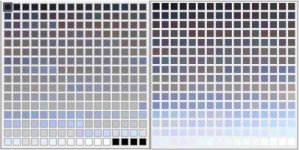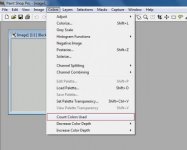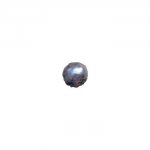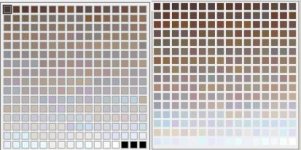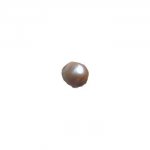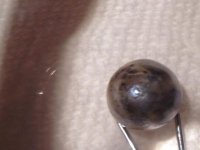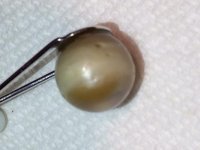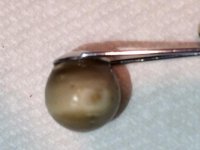Truly intriguing stuff.
Dave, as you've gotten adept at this, would you please tell us how much time you spend now on the whole process, from the photograph to compiling the mosaic for the pallette, to the computations, compared with your early efforts?
I've been in British Columbia since 1979. I was a commercial diver and worked in what was then known as the "C" license fisheries. The license described the development of underutilized species harvest in anything other than salmon or herring. I harvested geoducks (and other clams), sea urchins, abalone, sea cucumbers and barnacles. Mostly food resources, but discovered niches in biomedical and ecological research.
Pearls and mussels came into that mix earlier than most. In a sense, it was a full time job even though other species were involved. My first two provincial leases/federal aquaculture permits were established in 1985, including Lagoon Island. The second site was at Indian Island, where I farmed Manila clams (Venerupis philipinarium). I focused on clams at a commercial level, while Lagoon Island remained in development. In those days there was no internet, so you can imagine that pearl culture outside of the mainstream locations was a lonely endeavour. I had some help from marine biologists, shellfish hatcheries and a local pharmacist with ties to Japan. At the same time, another experimental farm was in operation nearby. Dr. Peter Fankboner was experimenting with the viability of abalone pearls at Bamfield, but our philosophies where worlds apart. I approached things from the standpoint of commercial viability, while they operated on grants and academics in the absence of a business plan. Once the money ran out, so did they.
While I have some post secondary education in marine biology, I have other skill sets. Broadcast engineering and media, maritime captain, fire fighting and hazardous materials incident command. While pearls often took a back seat to those trades, they always remained in the forefront as far as continued research goes. Very often between contracts or seasons, I'd revisit my research sites to observe changes or gather new data. That was until 2009, where at the time, I was Chief Engineer of a chain of radio stations and a media stringer. I foresaw major changes in those fields and knew after the 2010 Winter Olympics ended, I'd likely be looking for new work.
I decided to fall back one of my most beloved visions of all... pearls. Since re-establishing myself in that field, my time spent targeting the objective is greater. I've since developed better networking with international individuals, resources and technology, even though many of my methods remain unique to the environment or self explored. I still do other things. I have to. R&D is not cheap and zero revenue is difficult to maintain for long periods. Collaborative research, special collection and data mining bundle nicely with pearl research.
My support for sustainable pearl farming is unshakable. I have all the respect in the world for the decades of trial and error, hard work and clever marketing. I have no connection to any of them in business or technology. In actuality, I take exception to some aspects of the industry as we know it. Monoculture, loss of genetic diversity, anti-fouling and handling, for example. I am well aware of the perils of those aspects and remain committed to diminish or not replicate them in my operation.
